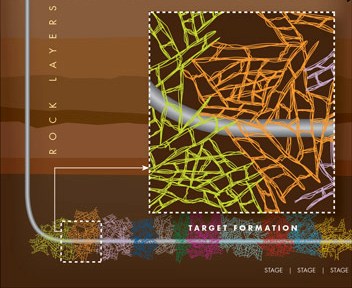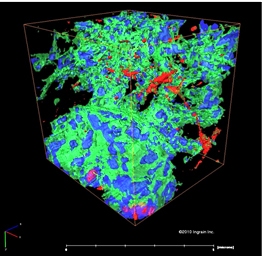This project targets on improving the understanding of the flow behavior of natural gas and introduced fluids (water, surfactant solutions and polymers) in nano-darcy range of tight gas and shale formations by using advanced single-molecule imaging system combined with nano-fluidic chips and pore-scale numerical simulation techniques.
Specifically, MS&T examines the flow behavior of gas and introduced fluids in the nano-scale pores and cracks in tight formations and studies the effect of introduced fluids on natural gas transportation properties, such as capillary pressure, absolute permeability, relative permeability, non-Darcy flow. The difference of fluid flow in shale and tight sand formations is identified. This project also addresses the submicron pore structure of shale gas and determines the potential effects of organic matter (kerogen), rock mineralogy on pore types, pore networks and permeability. The quantitative and qualitative geochemical analysis is carried out to obtain valuable information about kerogen type and its degree of thermal maturation. Furthermore, a robust tomography procedure using a dual-beam (SEM-FIB) instrument is used to characterize the submicron-pore structures. The fundamental research will result in novel methods to determine the fluid flow properties in tight formation.
The project has seven tasks:
- The first three tasks meet initial RPSEA requirements.
- The fourth task is to use novel nanofabrication techniques capable of defining geometric features down to 10 nm to fabricate nano-fluidic chips that mimic the pore geometry of tight formations.
- The fifth task is to carry out imbibition and core flooding tests to understand the interaction between fluid and fluid and the interaction between fluid and rock in macroscale core samples.
- The sixth tasks is to visualize the natural gas, water, surfactant solution and polymer solution flow behavior in the nano-scale pore and cracks using single molecule detection system. The flow behavior from macroscale and nanoscale results will be compared and correlated.
- The seventh task is to characterize fracturing fluids injection into tight formations with nanoscale pores and the subsequent flowback using pore scale numerical simulation. The properties that can be characterized include relative permeabilities, residue saturation of gas during invasion, residue saturation of liquid after flowback, effect of pore microstructure. Comparison with nano-fluidic chip and core flooding experiment results can be used to verify and adjust the mathematical models.



